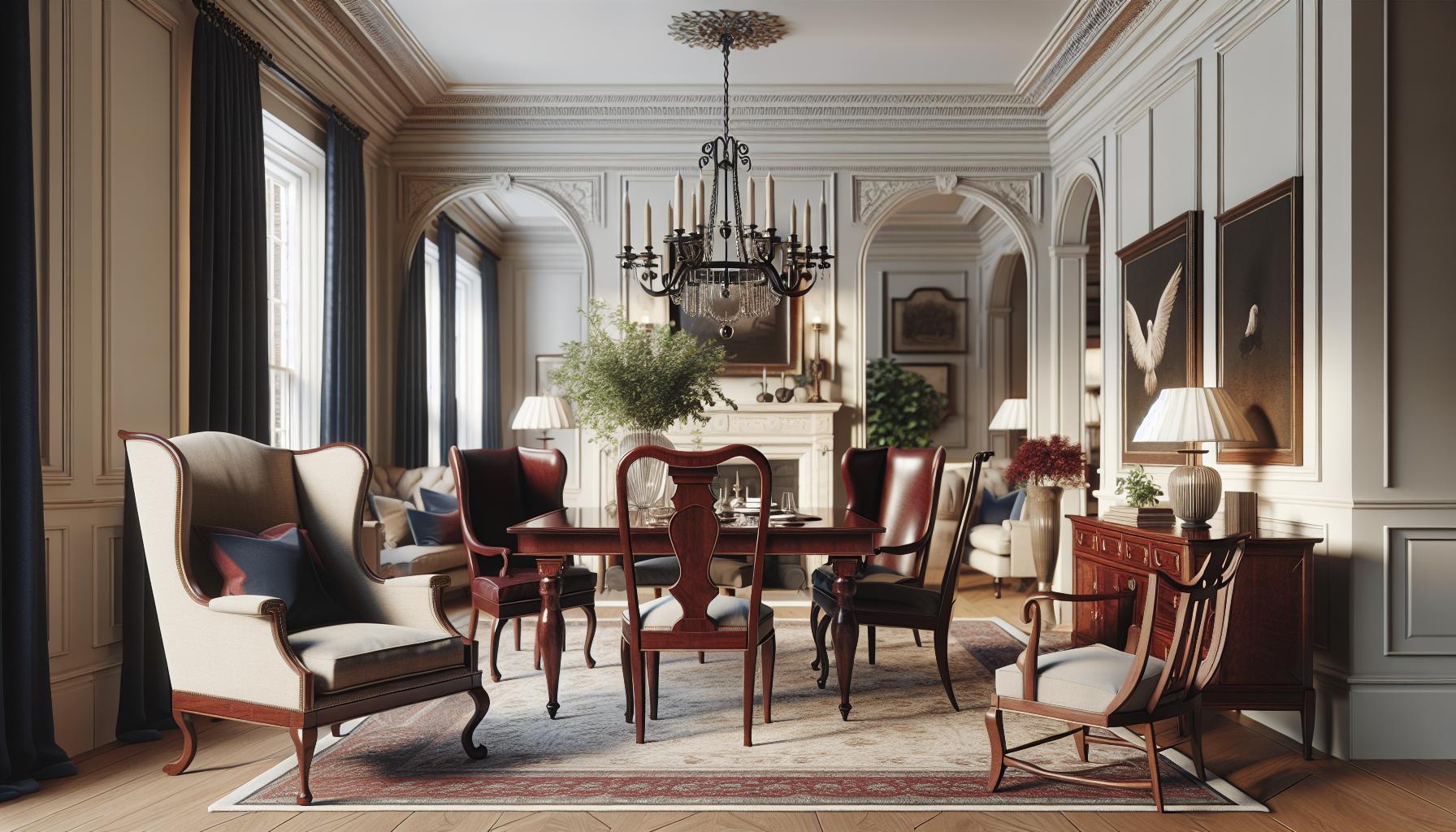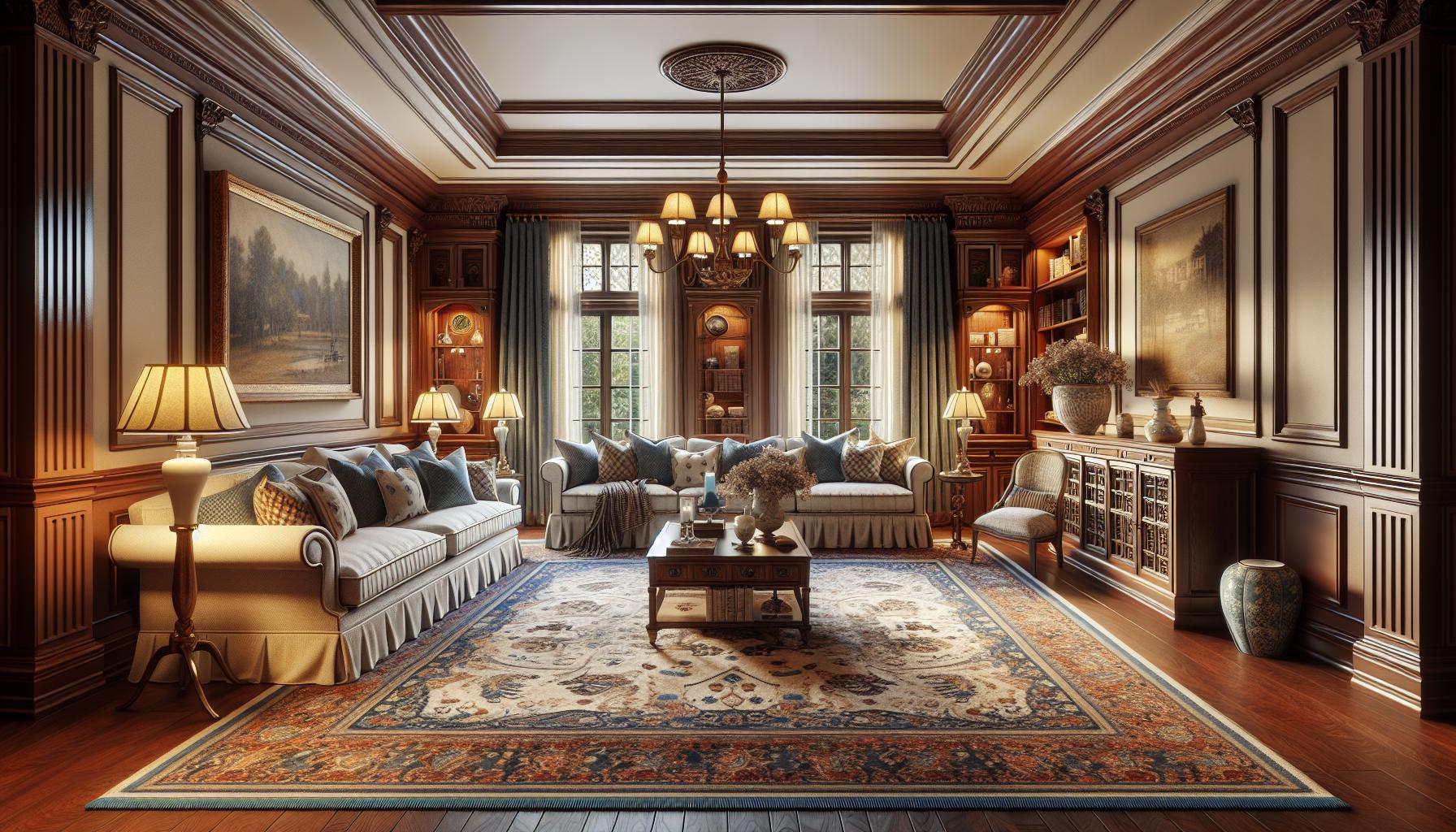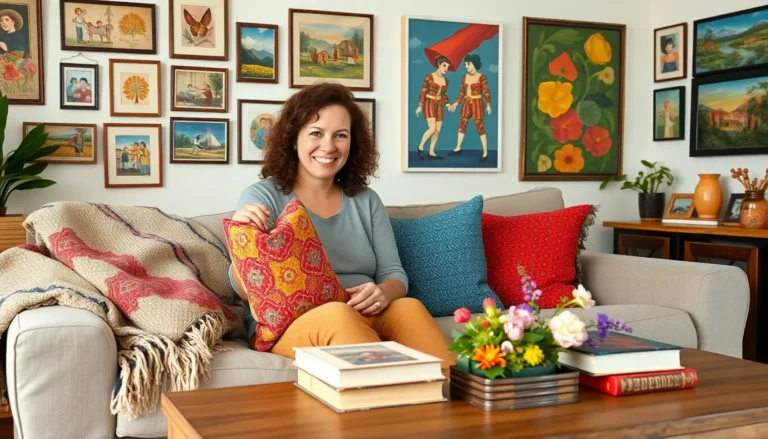Colonial Revival interior design brings timeless elegance into modern homes. It’s a style that marries classic charm with contemporary comfort, perfect for those who crave a touch of history without sacrificing today’s conveniences.
Imagine walking into a space adorned with rich wood accents, crisp lines, and inviting colors. Each element tells a story, creating a warm and welcoming atmosphere. Whether revamping a single room or transforming an entire house, Colonial Revival offers versatility and sophistication that never goes out of style.
Embrace the beauty of a bygone era with a fresh twist. Let Colonial Revival interior design inspire your next decorating project and make your home a stylish haven where tradition meets today.
History Of Colonial Revival Interior Design
Colonial Revival interior design emerged in the late 19th century as Americans sought to celebrate their heritage. Sparked by the 1876 Centennial Exhibition, the movement reflected a renewed interest in the architectural and decorative styles of the American colonial period. Architects and designers began incorporating classic elements such as symmetrical layouts, gabled roofs, and multi-paned windows into modern homes.
Throughout the early 20th century, Colonial Revival gained widespread popularity, particularly during the 1920s and 1950s. Homeowners favored its timeless appeal and versatility, allowing seamless integration with contemporary lifestyles. Key features included rich hardwood floors, paneled walls, and built-in cabinetry, which provided both functionality and aesthetic charm.
Furniture design played a significant role in defining the Colonial Revival style. Pieces often showcased clean lines, sturdy construction, and traditional motifs like turned legs and carved detailing. Upholstery choices leaned towards natural fabrics in neutral tones, enhancing the overall warm and inviting atmosphere.
Lighting fixtures also mirrored the colonial influence, with chandeliers and sconces made from materials like brass and wrought iron. These elements complemented the intricate woodwork and added a touch of elegance to interior spaces. Additionally, color palettes remained subdued, emphasizing whites, creams, and muted blues to create a cohesive and harmonious environment.
The movement extended beyond residential design into public buildings and institutions, reinforcing its cultural significance. Educational facilities, libraries, and government offices adopted Colonial Revival elements to convey stability and tradition. This widespread adoption solidified the style’s enduring legacy in American interior design.
Post World War II, Colonial Revival continued to evolve, merging with other styles to meet changing tastes. Today, it remains a preferred choice for those seeking a blend of historical charm and modern comfort. The enduring popularity of Colonial Revival interior design underscores its ability to adapt while honoring America’s architectural roots.
| Key Periods | Characteristics |
|---|---|
| Late 19th Century | Symmetrical layouts, gabled roofs |
| 1920s | Rich hardwood floors, paneled walls |
| 1950s | Built-in cabinetry, traditional furniture |
| Post World War II | Integration with modern elements |
Key Features Of Colonial Revival Interiors

Colonial Revival interiors showcase timeless elegance through distinctive design elements. These features blend traditional aesthetics with modern functionality.
Furniture Styles
Colonial Revival furniture emphasizes clean lines and craftsmanship. Wingback chairs, mahogany tables, and built-in cabinetry are common choices. Each piece often features traditional motifs, such as turned legs and carved details. Upholstery typically uses natural fabrics in neutral tones, enhancing the room’s classic appeal. Functional design integrates aesthetic charm, ensuring furniture serves both purpose and style. Wooden elements dominate, reflecting the era’s emphasis on quality materials. Accessories like four-poster beds and elegant dressers complement the overall design, creating harmonious spaces. This furniture style adapts seamlessly to various room sizes, maintaining a cohesive look throughout the home.
To complete the look, consider adding a console table that echoes the Colonial Revival style. Positioned in an entryway or behind a sofa, a well-crafted console table with traditional detailing can enhance both functionality and elegance, serving as a stylish surface for lamps, books, or decorative accents.
Color Palettes
Color palettes in Colonial Revival interiors prioritize subdued and harmonious tones. Whites, creams, and muted blues form the foundation, providing a serene backdrop. These colors enhance natural light, making spaces feel open and inviting. Accents in deep reds, greens, or navy add depth and interest without overwhelming the design. Paint finishes typically use matte or eggshell, contributing to the traditional atmosphere. Natural wood hues complement the color scheme, maintaining consistency across different elements. Incorporating subtle patterns and textures further enriches the palette, ensuring each room reflects refined elegance. This approach creates a cohesive environment that honors historical roots while accommodating contemporary tastes.
Incorporating Colonial Revival In Modern Homes
Integrating Colonial Revival design into contemporary spaces enhances both elegance and comfort. This style seamlessly merges historical charm with modern functionality.
Blending Traditional And Contemporary Elements
Combine rich hardwood floors with open-concept layouts for a balanced aesthetic. Introduce classic molding and trim alongside sleek, modern furnishings to create visual harmony. Utilize symmetrical arrangements to maintain traditional balance while incorporating minimalist decor for a contemporary touch. Neutral color palettes serve as a foundation, allowing accent colors from modern artwork or textiles to stand out. Mix materials by pairing vintage wood pieces with stainless steel accents, adding depth to the design. Incorporate traditional architectural details, such as paneled walls or built-in cabinetry, with modern lighting solutions like recessed LEDs. This fusion ensures spaces remain timeless and updated, accommodating current lifestyles without sacrificing historical aesthetics.
Selecting Appropriate Accessories
Choose accessories that reinforce the Colonial Revival theme while complementing modern elements. Opt for classic lighting fixtures, such as brass chandeliers or wrought iron sconces, to add warmth and character. Incorporate textiles with traditional patterns, like stripes or plaids, in cushions and curtains to introduce texture. Display vintage-inspired artwork and framed maps to evoke historical significance. Select furniture with clean lines and traditional silhouettes, such as wingback chairs or mahogany tables, ensuring they blend seamlessly with contemporary pieces. Utilize built-in shelving to showcase curated items, maintaining an organized and elegant space. Accessories should enhance the overall design without overwhelming, achieving a balance between authenticity and modern simplicity.
Popular Colonial Revival Design Trends
Colonial Revival design continues to evolve, blending timeless elements with modern innovations. Rich hardwood flooring remains a cornerstone, providing warmth and durability to living spaces. Incorporating symphmetrical layouts, designers create balanced rooms that reflect traditional aesthetics while accommodating contemporary lifestyles.
Paneled walls are trending, offering texture and depth. These panels often feature classic wainscoting paired with neutral paint colors, enhancing architectural details without overwhelming the space. Built-in cabinetry gains popularity for its functional elegance, seamlessly integrating storage solutions into the design.
Furniture choices emphasize clean lines and traditional motifs, with pieces crafted from high-quality woods like mahogany and cherry. Upholstery trends favor natural fabrics in neutral tones, ensuring versatility and comfort. This approach allows furnishings to complement various color palettes and room configurations.
Lighting fixtures play a crucial role in modern Colonial Revival interiors. Brass chandeliers and wrought iron sconces are favored for their historical charm and ability to add a touch of sophistication. Additionally, smart lighting solutions are being integrated to provide both convenience and energy efficiency without compromising style.
The color palette remains subdued, with whites, creams, and muted blues dominating. However, contemporary trends introduce accent colors such as deep greens or navy to create focal points and add visual interest. These accents are often reflected in textiles and accessories, including traditional-patterned rugs and vintage-inspired artwork.
Open-concept layouts are increasingly popular, merging rich hardwood floors with spacious, airy environments. This combination supports a seamless flow between rooms, making homes feel larger and more inviting. Classic moldings are maintained to preserve the Colonial aesthetic, while sleek, modern furnishings introduce a fresh contrast that enhances overall harmony.
Lastly, sustainable materials and practices are becoming integral to Colonial Revival design. Homeowners prioritize eco-friendly wood finishes and energy-efficient fixtures, aligning traditional beauty with contemporary values of sustainability and responsibility.
Tips For Achieving A Colonial Revival Look
Incorporate rich hardwood floors such as oak or mahogany to establish a warm foundation. Select furniture with clean lines and traditional motifs, ensuring pieces like wingback chairs and wooden dining tables enhance the classic aesthetic. Utilize paneled walls or wainscoting to add architectural interest and depth to rooms.
Choose a subdued color palette featuring whites, creams, and muted blues to create a cohesive environment. Integrate built-in cabinetry for functional elegance, providing ample storage while maintaining a streamlined appearance. Opt for natural fabrics in upholstery, including linen and cotton, to emphasize authenticity and comfort.
Enhance lighting with classic fixtures like brass chandeliers and wrought iron sconces, which complement intricate woodwork and elevate the overall design. Arrange multi-paned windows to allow ample natural light, reinforcing the symmetrical and balanced layout typical of Colonial Revival style.
Add traditional-patterned textiles, such as striped or floral curtains and upholstery, to introduce texture and visual interest. Incorporate vintage-inspired artwork and accessories, including antique mirrors and porcelain vases, to honor historical elements while maintaining a modern feel.
Maintain open-concept layouts by blending traditional elements with contemporary furnishings, ensuring spaces remain functional and inviting. Prioritize quality materials and craftsmanship in all design aspects, reflecting the enduring elegance of Colonial Revival interiors.
| Key Elements | Examples |
|---|---|
| Hardwood Floors | Oak, Mahogany |
| Furniture Styles | Wingback Chairs, Wooden Tables |
| Wall Treatments | Paneled Walls, Wainscoting |
| Color Palette | Whites, Creams, Muted Blues |
| Lighting Fixtures | Brass Chandeliers, Wrought Iron Sconces |
| Window Designs | Multi-paned Windows |
| Textiles | Linen, Cotton Upholstery |
| Accessories | Antique Mirrors, Porcelain Vases |
By following these tips, homeowners can effectively achieve a Colonial Revival look that blends historical charm with modern comfort.
Conclusion
Colonial Revival interior design offers a timeless elegance that seamlessly fits modern lifestyles. By blending traditional elements with contemporary touches it creates spaces that feel both classic and fresh. Homeowners can enjoy the rich textures and sophisticated details that define this style while benefiting from its adaptability. Embracing Colonial Revival allows for a harmonious balance between heritage and today’s comfort needs making it a lasting choice for those seeking enduring beauty in their homes.





